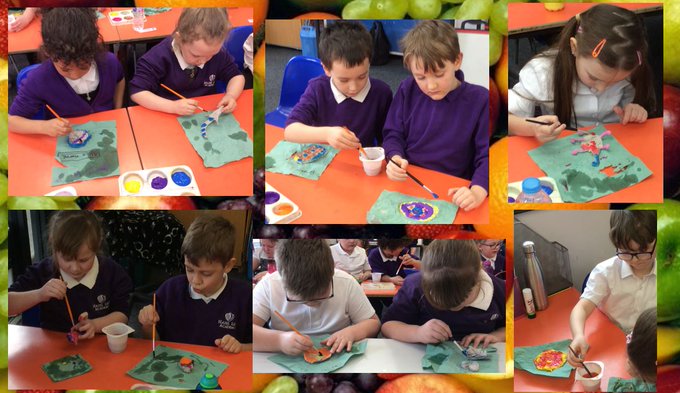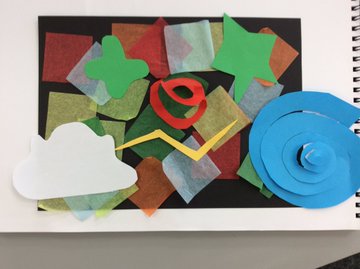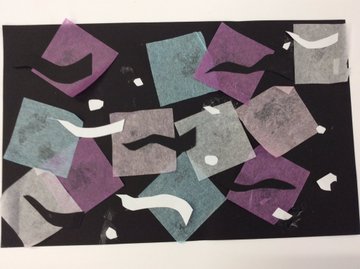Art

At Hazel Leys, we believe that a comprehensive art curriculum is a knowledge rich curriculum. Knowledge, in the realm of art means knowledge not only of artists, designers, architects and their work, but of the artistic concepts that relate to their work shown in different types and styles of art, how these relate to each other in a historical context and how this affects the children’s own use of materials and development of skills.
Our art curriculum is designed to enable children make connections between the work of artists, architects and designers and their own work. The curriculum provides meaningful opportunities for self-expression to give children the space to learn who they are as an artist by exploring different mediums. We aim to ignite children’s love for art by giving them the ability to express themselves through drawing, painting, sculpture, printing, collage, photography and textiles. The curriculum also provides extensive opportunity for children to develop their skills in visual literacy by looking at, thinking and talking about art.
The curriculum fulfils the requirements of the National Curriculum for England. This course of study seeks to show how art shapes our history and contributes to our national culture. It looks at key movements and historical periods including, studying art from Ancient Greece and Rome, Anglo-Saxon England, the Italian Renaissance, Victorian art and architecture, French Impressionism and 20th century Modernism as well as art relating to different religions and cultures such as Islamic art, art from Western Africa and Chinese painting and ceramics.
 Intent:
Intent:
At Hazel Leys, we strongly believe that art plays a vital part of children’s education, with a significant and valuable role in the taught curriculum and the enrichment opportunities we offer our pupils. The art curriculum will develop children’s critical abilities, as well as an understanding of their own and others’ cultural heritages through the study of a diverse range of male and female artists. Children will develop their understanding of the visual language of art with effective teaching and considered sequences of lessons and experiences.
Understanding of the visual elements of art and design (line, tone, texture, colour, pattern, shape, 3D form) will be developed by providing a curriculum which will enable children to reach their full potential. Our children will be exposed to a broad-based experiential curriculum, experiencing various artistic disciplines throughout their time at our school. Teaching staff lead art lessons with a no ceiling approach to differentiation, taking into consideration the needs of children with SEND, enabling all children to access our challenging curriculum and to feel confident in their developing skills.
Our carefully crafted, knowledge-rich curriculum is designed to provide our children with the subject specific language they need to describe, question and discuss ideas relating to the art, craft and design.. The children at Hazel Leys have a voice and have the right to use it and so should be encouraged to express their opinions. We teach and encourage the use of debate and in doing so provides a platform for our children to express their views for example, when critiquing the works of other artists.


Implementation:
At Hazel Leys, the implementation of the art curriculum provides for gradual progression in terms of skills (split into painting, drawing, 3D form, collage, textiles, printmaking, photography and mixed media), introducing the children to as diverse a range of materials as possible. It also provides for progression in terms of knowledge of different concepts and types of art (for example Style in Art and Narrative Painting are studied in year 1, and then revisited in year 2 in History Painting and in year 5 in Style in Art). The structure of the planning also provides for progression in terms of process in art, both in terms of critical analysis of others’ art and the necessary observation, exploration and evaluation needed for the children to create their own art.
Activities children are directed to undertake in lessons are designed with an eye to the importance of learning and practising process. These activities include verbal and written observations and observational, analytical and imaginative drawing activities in key stage 1, leading to the process of independent investigation, observation, annotation, sketching, design and planning (allowing the children to experiment and invent) by the end of key stage 2. Independent and investigative study and the understanding of process is particularly provided for in the units which conclude the year for years 5 and 6. The curriculum fulfils the requirements of the National Curriculum for England and seeks to show how art shapes our history and contributes to our culture. It looks at key movements and historical periods in the history of Western art, studying art from ancient Greece and Rome, Anglo Saxon England, the middle-ages, the Italian renaissance, Victorian art and architecture, French impressionism and modernism of the 20th century.
Where a unit looks at a period in history which is also addressed in the history curriculum, the art unit is taught after the history unit. This allows the children to approach their study of art with a degree of confidence and ‘expertise’ and to consolidate their knowledge by creating connections between the different disciplines.
At Hazel Leys, we recognize that a study of Western art lacks cultural diversity, and therefore specific units and artists have been added to the curriculum to introduce balance, particularly bearing in mind the cultural diversity of many primary schools. Year 5 study art from the Islamic world, western Africa and China and these units address the issue of accepted art history narratives, colonialization and empire and the influence of non-Western art on art of the Western world. Women artists have also been consciously included in the curriculum, and in key stage 2 there is provision for discussing why women are under-represented in traditional Western art history narratives. Study of modernism and art from the 20th century in year 6 provides an opportunity to study art by women and artists from ethnic groups traditionally underrepresented in British art.
The Curriculum Overview explains how this is achieved, summarising for each year group what concepts of art, types of art, skills and processes are covered. The Overview goes on to specify, in more detail, what artists, designers, architects, concepts and skills are covered in each unit. It is expected that evidence of the children’s study will be recorded in sketchbooks which can include the work, or photographs of the work they produce each lesson. Sketchbooks may include written reflections on the work of other artists/designers/architects, as well as the children’s written reflections on their own work. These activities are all provided for in lesson-to-lesson planning. Staff also include knowledge organiser, learning objectives and multiple-choice quizzes in the children’s sketchbooks, so that both children and teachers can easily identify progression in knowledge, process and application of skills.
EYFS
Through Expressive Arts children are encouraged to explore different media, explore how media can be combined to create different effects and develop a range of skills and techniques experimenting with colour, design, texture, form and function. Children are given daily access to a range of creative opportunities and enjoy our carefully planned and well-resourced creative areas both indoors and out. Children are encouraged to create on both small and large scales and our outdoor environment supports this well. Staff encourage the children to develop their communication and language skills through talking about their creations and sharing these with others to build confidence and raise self-esteem.
Every unit of work covers all of the Early Learning Goals (ELG’s) within the Early Years Framework. With children having opportunities to return to skills in order to develop mastery within art.



Impact:
The impact of this curriculum design will lead to progress across key stages relative to a child’s individual starting point and their progression of skills. The impact of our Art curriculum is measured in a variety of ways:
- Annual reporting of standards across the curriculum.
- Marking of written work in books.
- A reflection on standards achieved against the planned outcomes;
- A celebration of learning for each term which demonstrates progression across the school;
- Pupil discussions about their learning; which includes discussion of their thoughts, ideas, processing and evaluations of work.
By end of the Art curriculum at Hazel Leys, our children will:
• Have a growing knowledge of the importance of art, craft and design in society and the wider world
• Have a wider vocabulary of art specific terms.
• Aspire to discover more about various artists, themes, artistic movements
• Know that they can use their voice to express their opinions on pieces of art and critique appropriately
• Be able to apply the formal elements of art (colour, shape, form, line, tone, texture, composition, space and pattern) with increasing confidence across a range of medium (drawing, painting, sculpture, printing)
